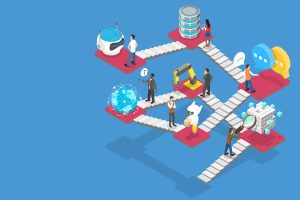World Environment Day: How tech can drive green energy growth

Gareth Brown, CEO, Clir Renewables, discusses how tech can support the growth of renewable energy as the world becomes more aware of the need to move away from fossil-fuel-generated energy.
World Environment Day this year falls at a time of unique opportunity. As climate consciousness has increased, Covid-19 has concurrently forced the hand of many nations to rally up investments that will set them on the course to achieving new net-zero targets and reboot the economy. With the threat of climate change more apparent every year, given increases in global temperatures and extreme weather events, it’s no surprise that 2020 saw renewable installed capacity grow at its fastest rate in 21 years – increasing 45% compared to the year before. According to the International Energy Agency, this trend is set to continue post-Covid-19, too, with a predicted 270 GW of renewable capacity to be added in 2021 and 280 GW in 2022.
However, increasing investor confidence is key to unlocking growth into the future and meeting the world’s electricity demand through renewables despite unprecedented growth to date. Data is critical to sustaining this investment confidence into the next decade. It allows asset owners to quantify and analyse each renewable portfolio and find opportunities to boost its energy generating and financial performance – and crucially, it allows asset owners and investors to navigate financial risk better.
Revenue from annual energy production is a good place to start investigating risks. We can’t control the frequency or reliability of the wind blowing or the sun shining, which means that there’s no steadfast guarantee of how much electricity will be produced. While weather data can be analysed to predict resource levels just like any other forecast, there will always be a degree of uncertainty when it comes to long-term predictions.
Unfortunately, even when natural resources are at their peak, wind turbines and solar panels might not be operating to their best. These assets are made up of hundreds of complex components, and at a glance, it’s difficult to identify which component of which solar panel or wind turbine is underperforming and causing the project’s overall generation to suffer. You can’t fix a problem if you can’t find it, so consistent optimal performance is dependent on your ability to find those problems.
To perform consistently and effectively, renewable energy projects need digital tools to find faults, bring order to the variables that can be controlled, quantify risks, and ultimately provide a full understanding of financial performance for all stakeholders.
To do this, owners must digitise every turbine and solar panel, collect data on every aspect of each component’s performance, and contextualise this with resource data such as wind speed and irradiance, and mapping of surrounding geospatial features that will impact the resource. Once this data has been collected, machine learning is a critical tool to understanding exactly which piece of equipment is not working optimally and why – fast.
Machine learning-driven analysis allows asset owners to find the source of underperformance quickly so the operations and maintenance team can take action to ensure that the health of equipment does not deteriorate further and impact long term performance and costs.
‘Big Tech’ firms like Google and Amazon rely on tools like machine learning to improve operations and quantify financial performance. Whether it’s optimising search engine results or delivery timelines, there is no doubt that machine learning has given them a competitive edge when it comes to meeting and exceeding their customers’ expectations.
Machine learning has the potential to become an integral part of addressing climate change too, but more companies and investors need to adopt a big tech approach to clean energy.
For example, in 2019, Clir onboarded a 1 GW portfolio of wind energy assets to its platform, with projects spread out across the globe. Using the machine learning-driven platform, the data analysed encompassed performance, operational health, resource, and meteorological data. This process identified more than thirty previously unidentified issues with components and recommendations for increasing production, resulting in an uptick of USD$6mn, a ten-fold return on investment.
Clir performs complex analyses to give asset owners, managers, and investors complete oversight of the performance and health of an asset. For investors, the clarity this process delivers is key as they want access to top-line performance and health statistics and recommendations that indicate exactly where their project can improve, instead of being bombarded with huge volumes of data.
READ MORE:
- Inside Mimecast’s The State Of Brand Protection 2021
- ServiceNow delivers new security integrations with Microsoft
- Microsoft and Darktrace join forces to provide self-learning AI cybersecurity to users
- What can corporates learn from digital transformation in the COVID era?
Impressive renewable capacity growth despite the Covid-19-led economic slump has proved that renewables are already playing a huge role in the global energy system. To completely replace “traditional” sources of energy, however, more investment and more project development is needed – and at the core of this must be comprehensive data collection and smart analytics. Fortunately, this technology already exists – renewable energy developers and investors just need to think like big tech, and use it.
For more news from Top Business Tech, don’t forget to subscribe to our daily bulletin!
